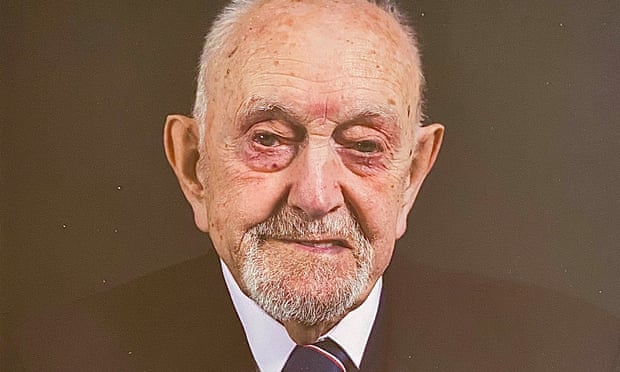Ted Cordery
(1924-27.09.2020)

Ted Cordery's obituary
Ted was born in Forest Gate, east London, one of five sons of John, a fishmonger, and his wife, Elizabeth (nee Venton), and he went to Odessa Road school. He began work as a printer, initially printing Stork margarine wrappers, and returned to the trade after the war. He eventually became a warehouseman, a highly skilled position that enabled him to operate all the machines. He worked at the Temple Press producing The Motor magazine, and for a number of national newspapers, including The Times and, latterly The Sunday People, part of Robert Maxwell’s Mirror Group. As father of the chapel (union organiser), Ted was regarded as a constant thorn in Maxwell’s side, something he was extremely proud of.
An East End boy who was bombed out of his home in 1941, Ted Cordery volunteered for the Royal Navy at the age of 18. In 1942 he was drafted to HMS Belfast and spent much of the following year on the Arctic convoys, enduring the icy voyages as the cruiser escorted supply ships to the Soviet Union – “the worst journey in the world”, according to Churchill.
In December 1943 the Belfast was involved in the Battle of the North Cape, when the battleship Scharnhorst was sunk by British torpedoes. Ted was a torpedo operator. Only 36 of the Scharnhorst’s crew of 1968 were rescued, and for the rest of his life Ted grieved for the German sailors.
Six months later he was on the Belfast on D-day, operating the crane that lifted the wounded from the sea. The sights he witnessed that day were something he was never able to talk about without tears.
In 1944 he married Lily Sadler, and they had a son, Michael. She died in 1991, and in 2005 Ted married for a second time, to Glynis Freshwater (nee Griffiths); they lived near Oxford.

Like many men of his generation, Ted’s life was defined by 1939-45. He was decorated by the Russian government, and France awarded him the Legion of Honour. For the 75th anniversary of D-day in June 2019 he sailed to France with 300 other veterans, moved by the cheering crowds who waved farewell from Portsmouth. At the commemoration beforehand he was presented to the Queen, the Prince of Wales and the US president.
His funeral took place in Cumnor, just outside Oxford; in the Port of London, the flag of HMS Belfast flew at half-mast.